|
   |
|
Page 4 |
Newsletter 129 Summer 2020 © Hampshire Mills Group |
|
Worsbrough Mill, Barnsley
Ruth Andrews
|
Just south
of Barnsley, our map showed a blue highlighted Mill,
so we went to investigate.
In 1972 West
Riding County Council began to restore Worsbrough
Mill as a working museum. It consists of a 17th
century 2-storey water-powered toll mill and a 19th
century 3-storey steam mill. Internally the two
mills have been very well restored and regularly
mill using French burr stones in the old mill. It is
open at weekends, with free admission.

Note the stone ramps which allowed sacks of corn to
be unloaded from waggons and wheeled into the mill
on barrows.
|
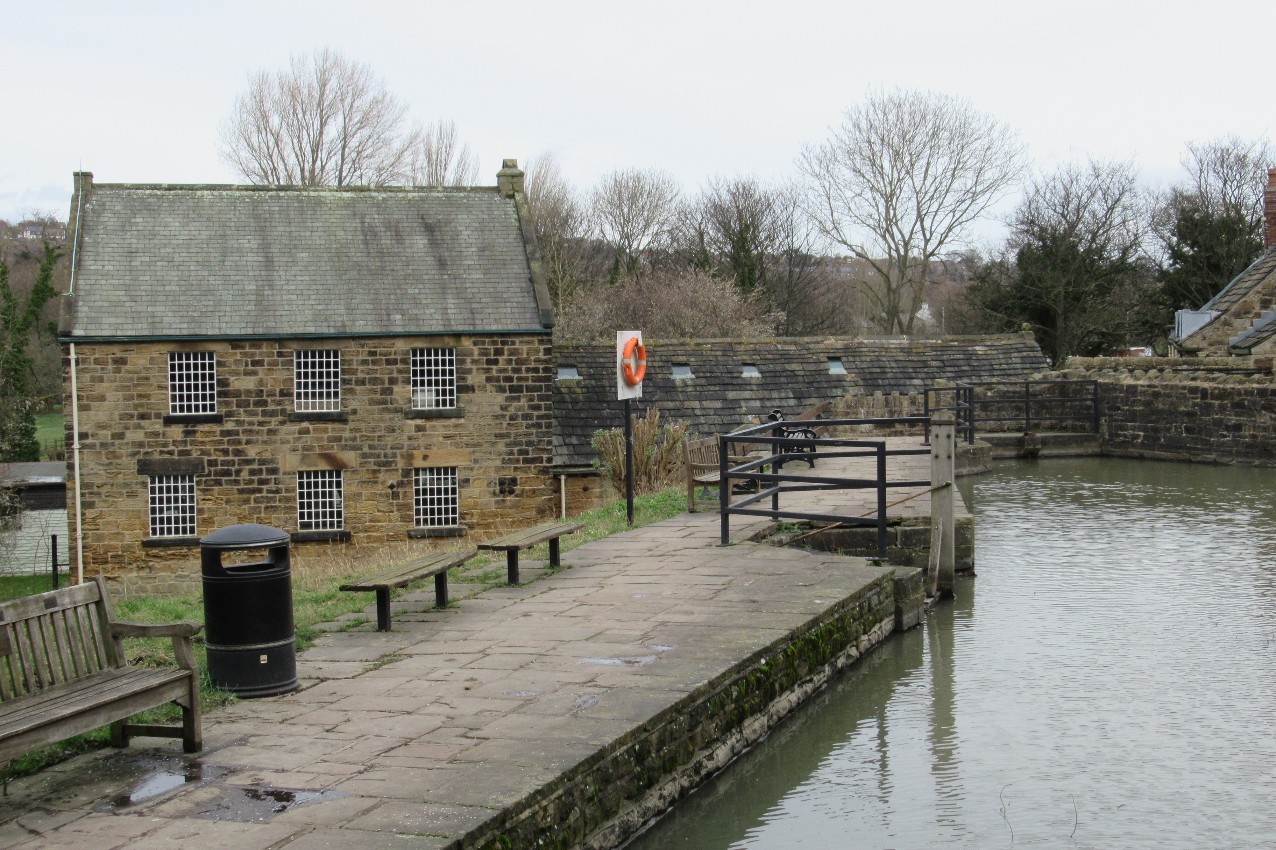 |
In the old
mill, water enters through an iron pipe which feeds
a header tank over the 14ft 4in x 4ft (4.38m x
1.22m) overshot cast iron waterwheel of 1864. It
drives 3 pairs of stones via a substantial upright
shaft. In the 1840s a new mill was added with a
Watt steam engine which was still in place until
1922. The new mill has a third storey with a bin
floor beneath the roof. Before this, the old mill
had worked on a ‘toll’ system for farmers and
smallholders who would bring their corn in small
quantities (so a bin floor was not required), from
which the miller would take his toll of 1/16 before
grinding. Both mills stayed in use.
|
|
Inside the
old mill, you can see the header tank for the water
wheel, and the absence of a bin floor is very
noticeable. From the top of the tank, a lever and
chain leads to a handle down by the millstones to
open the sluice. Note the label on the tank saying
‘level of water in mill pond’.
|
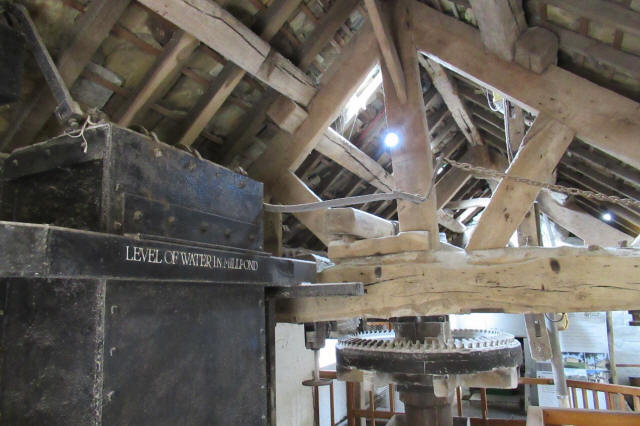 |
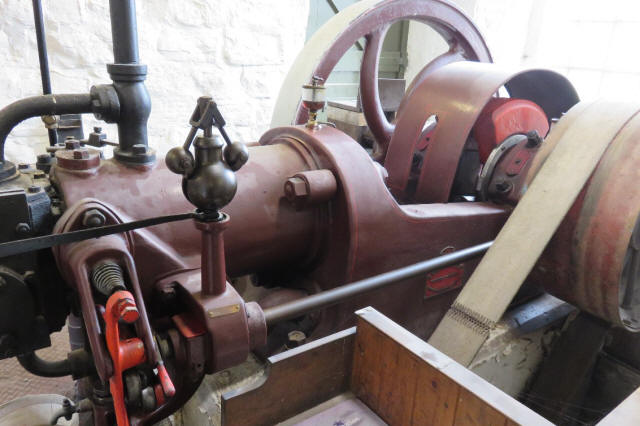 |
During the
restoration, a rare 1911 Hornsby hot bulb oil engine
(left) recovered from Sykehouse Windmill was rebuilt
in the original engine room, to drive the two stones
in the new mill, although they can also be driven
from the waterwheel, as explained later.
|
|
The old mill
end of the building has a traditional machinery
arrangement of waterwheel, pit wheel, wallower,
great spur wheel, stone nuts, and stones, as seen in
my pictures and the diagram from Martin Watts’s
guidebook. |
 |
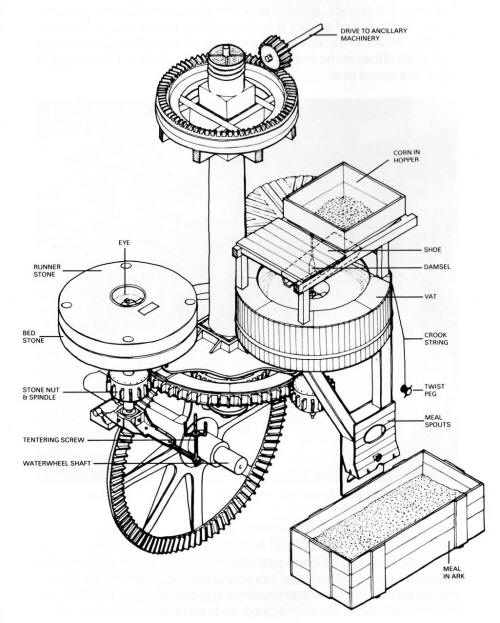 |
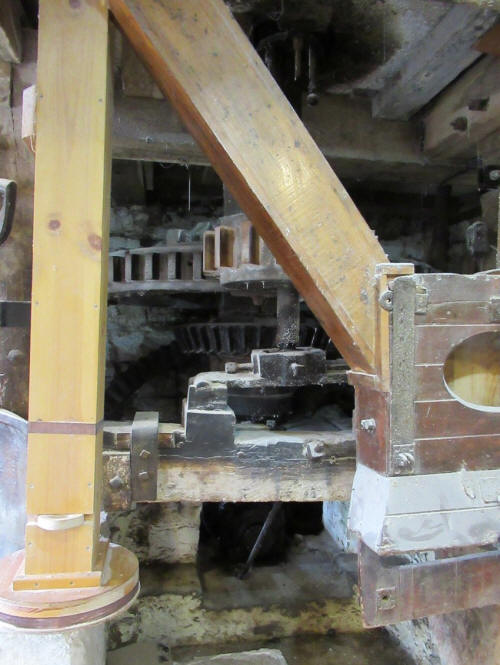 |
|
Three pieces of ancillary
machinery
are belt-driven from a layshaft off the crown wheel.
|
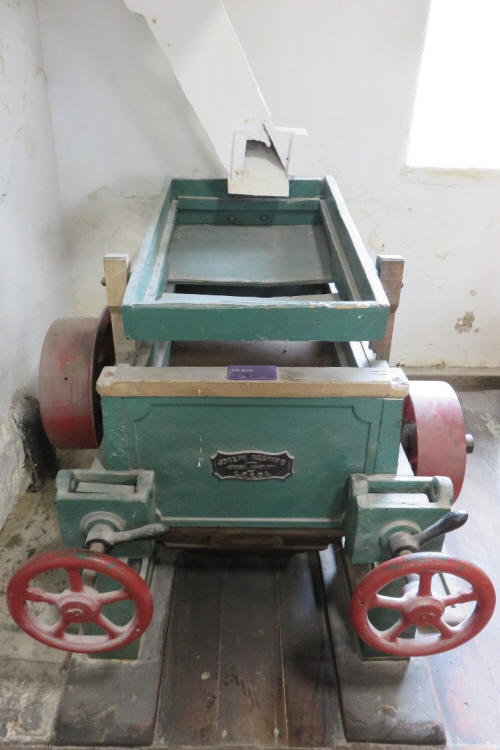
1. An
oat roller in the new mill has smooth rollers for
crushing oats, especially suitable for horse feed,
made by Joseph Bedford’s Argus Foundry in Leeds. |
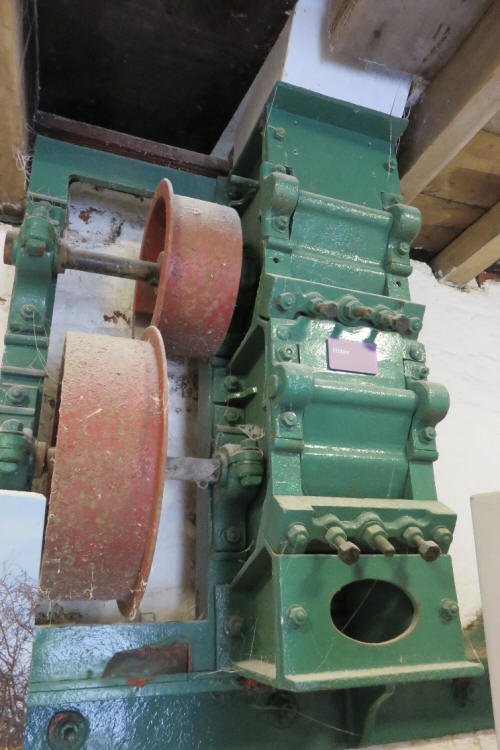
2. A
kibbler in the old mill has fluted rollers for
cracking open grains of corn or beans for feeding to
pheasants, made by Joseph Barron, also of Leeds. |
|
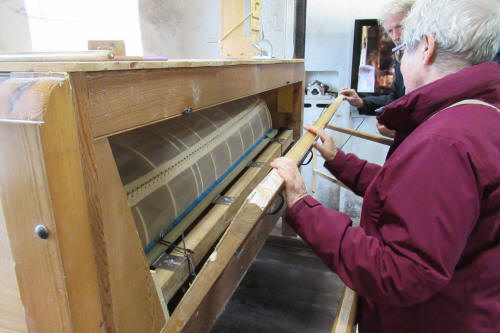
|
3. A
centrifugal dresser, also in the new mill, probably
replaced a larger one in the late 19th century. It
separates the wholemeal into finer flour and coarser
bran. Here, in the absence of the guide who was
educating a new trainee guide, I am acting as the
expert by opening the dresser to describe how it
worked to some other visitors. |
|
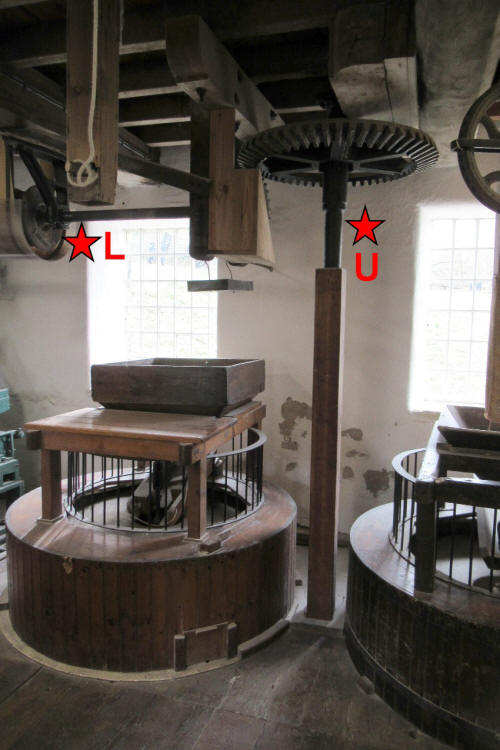 |
In the new
mill the arrangements are rather more complicated.
On the upper floor, the layshaft from the waterwheel
(«L, left) also drives an upright shaft («U, left
and below) which is connected to the horizontal
drive shaft on the lower floor («H, below) from the
oil engine in a room to the right. This in turn
meshes with the stone nuts («S, below) via several
large bevel gears driving upwards to the runner
stones on the floor above. This means that these
stones can be linked either to the waterwheel or the
oil engine (and previously the steam engine).
I hope you
appreciate all the head scratching needed by Keith
and I as we tried to figure this out, as the guide
book is silent on the matter, and the guide who
might have been able to explain it was unavailable,
as already mentioned
The mill
uses a range of premium quality grains sourced from
organic farms in England to produce flour and
associated products for trade and retail customers.
There is a tearoom in the mill house, and the mill
is located at the entrance to a 240 acre country
park.
Information
from the mill’s website
www.worsbrough-mill.com , the somewhat limited
guide book, and Wikipedia. The guide with the
trainee had rather more extensive crib notes, but
these did not appear to be available anywhere.
|
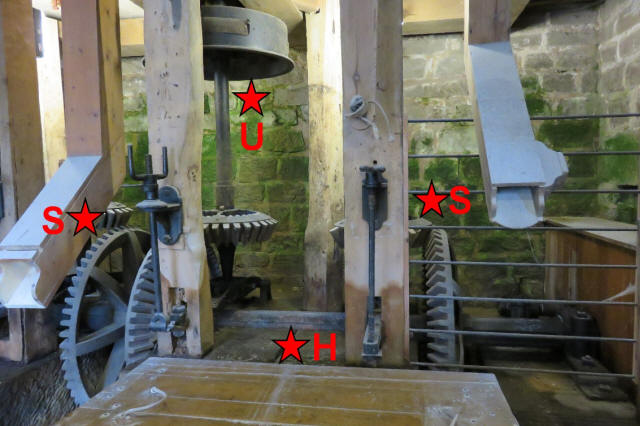 |
|
   |
|
|
